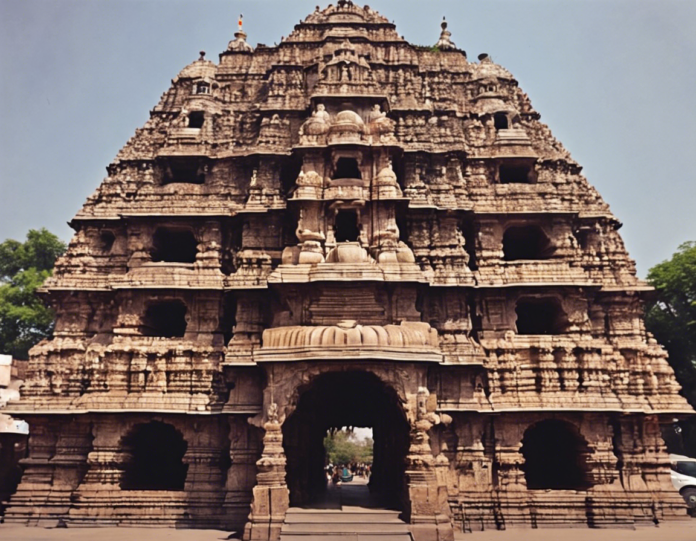Introduction:
The Ujjain Mahakal Mandir is a revered Hindu temple located in the ancient city of Ujjain in the state of Madhya Pradesh, India. Dedicated to Lord Shiva, the temple is one of the twelve Jyotirlingas, which are considered to be the most sacred abodes of Lord Shiva. The temple holds immense religious significance and is visited by millions of devotees every year. In this article, we will delve into the history, architecture, rituals, and significance of the Ujjain Mahakal Mandir.
History of the Temple:
The Ujjain Mahakal Mandir has a rich historical background dating back to several centuries. Legends state that the temple was originally built by the demon king Ravana, who was a devout follower of Lord Shiva. Over time, the temple underwent several renovations and expansions under the patronage of various rulers and dynasties, including the Marathas and the Scindias.
Architecture of the Temple:
The architecture of the Ujjain Mahakal Mandir is a fine example of classical Hindu temple architecture. The main sanctum sanctorum houses the lingam, representing the formless aspect of Lord Shiva. The temple complex is adorned with intricate carvings, sculptures, and paintings depicting various mythological stories and motifs. The spire of the temple, known as the Shikara, rises majestically, making it a sight to behold.
Rituals and Worship:
Devotees visiting the Ujjain Mahakal Mandir can participate in various rituals and ceremonies dedicated to Lord Shiva. The most significant ritual is the Bhasma Aarti, where sacred ash is applied to the lingam amidst chanting of Vedic hymns and prayers. The temple witnesses a huge gathering of devotees during Maha Shivaratri, an important festival celebrating the glory of Lord Shiva.
Significance and Beliefs:
The Ujjain Mahakal Mandir holds immense significance in Hindu mythology and is believed to fulfill the wishes of devotees who pray with a pure heart. It is also considered to be a place of liberation, where one can attain spiritual enlightenment and salvation. The temple’s location near the banks of the Shipra River adds to its divine aura and tranquility.
Visiting the Temple:
To visit the Ujjain Mahakal Mandir, devotees are advised to follow certain customs and traditions. It is customary to take a holy dip in the Shipra River before entering the temple premises. Devotees are also required to wear traditional attire and maintain a respectful demeanor while in the temple. Photography inside the temple is usually restricted to preserve the sanctity of the place.
Frequently Asked Questions (FAQs):
- What are the timings of the Ujjain Mahakal Mandir?
-
The temple is open from early morning till late evening. Specific timing details can be obtained locally or from the temple authorities.
-
Is there any online booking available for special rituals at the temple?
-
Yes, some special rituals can be booked online in advance through the temple’s official website or authorized platforms.
-
Are there any nearby accommodation options for devotees visiting the temple?
-
Ujjain offers a range of accommodation options, including budget hotels, guesthouses, and dharamshalas for devotees looking to stay near the temple.
-
What are the major festivals celebrated at the Ujjain Mahakal Mandir?
-
Apart from Maha Shivaratri, festivals like Shravan Maas, Navratri, and Diwali are celebrated with great fervor at the temple.
-
Can non-Hindus visit the temple?
-
Yes, the Ujjain Mahakal Mandir is open to people of all religions and faiths. Visitors are expected to respect the customs and traditions of the temple.
-
Is there a dress code to be followed while visiting the temple?
- Devotees are advised to wear traditional attire like sarees or dhotis while visiting the temple as a mark of respect to the deity.
In conclusion, the Ujjain Mahakal Mandir stands as a symbol of devotion, faith, and spirituality for millions of devotees across the globe. Its ancient roots, architectural splendor, and religious significance make it a must-visit pilgrimage site for those seeking divine blessings and inner peace.

